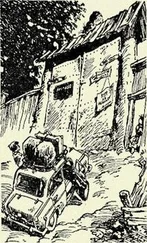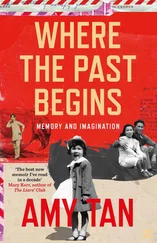3
In a book about Indians I once read that the soul cannot fly as fast as an airplane. Therefore one always loses one’s soul on an airplane journey, and arrives at one’s destination in a soulless state. Even the Trans-Siberian Railway travels more quickly than a soul can fly. The first time I came to Europe on the Trans-Siberian Railway, I lost my soul. When I boarded the train to go back, my soul was still on its way to Europe. I was unable to catch it. When I traveled to Europe once more, my soul was still making its way back to Japan. Later I flew back and forth so many times I no longer know where my soul is. In any case, this is a reason why travelers most often lack souls. And so tales of long journeys are always written without souls.
4
According to Walter Benjamin, there are two kinds of storytellers: “When someone goes on a trip, he has something to tell about, goes the German saying, and people imagine the storyteller as someone who has come from afar. But they enjoy no less listening to the man who has stayed at home, making an honest living, and who knows the local tales and traditions. If one wants to picture these two groups through their archaic representatives, one is embodied in the resident tiller of the soil, and the other in the trading seaman.”
There are some who travel much farther than sailors and remain in one place even longer than the oldest farmer: the dead. And so there are no storytellers more interesting than the dead. But it is a problem that their language cannot be understood, it is not even audible. How can one hear the stories of the dead? This is one of the most difficult tasks of literature and is solved in different ways in various cultures.
A theater, for example, is often a place where the dead can speak. A simple example is found in Hamlet : the dead father comes on stage and tells how he was killed by his brother. That is the decisive moment in this play, without which neither Hamlet nor the audience would have access to the past. They would have to go on believing the story of the murderer, who claimed Hamlet's father had been bitten by a poisonous snake. Through the dead man's story we learn a bit of the past that otherwise would have remained obscure. The theater is the place where knowledge not accessible to us becomes audible. In other places, we almost always hear only the tales of the living. They force their stories on us to justify themselves, and so that they will be able to go on living, like Hamlet's uncle. The tales told by the dead are fundamentally different, because their stories are not told to conceal their wounds.
5
There are other places besides theaters where one can hear the stories of the dead: for example in an anthropological museum. At the Museum of Anthropology in Hamburg there are a number of transparent coffins lined up one beside the other, each containing a dead figure. Each figure personifies a tribe. A coffin standing on end resembles a phone booth because the figures inside look as if they are about to tell a story. That is probably why these coffins have to be standing up rather than lying flat, as coffins usually do.
The figures in the coffins — dolls made of plastic — bear witness to the link between death and these dolls: all of the tribes represented in the form of dolls were, at some point in history, culturally or economically conquered by others and to some extent destroyed. As in other museums as well, a power relationship is illustrated here: that which is represented is always something that has been destroyed. In a zoological museum, for example, a stuffed wolf might be put on display, whereas no wolf can display a human being. Historical museums, too, are marked by a hierarchical relationship between past and present.
As long as an outsider appears threatening, the others try to destroy him. When he is dead, he can be lovingly represented as a doll in a museum. One can look at the doll, listen to the explanations of its way of life, view the photos of its homeland, but there is always something that remains unclear. There is a veil separating the museum visitor from the dead doll, making it impossible to learn much. One learns much more when one attempts to describe an imaginary tribe. What should their lives look like? How does their language function? What is this completely unfamiliar social system like? It is equally interesting to play the role of an observer who comes from a fictional culture. How would he describe “our” world? This is the endeavor of fictive ethnology, in which not the described but the describer is imaginary.
6
That the dolls can be thought of only in conjunction with death can be seen in the following brief example: a long time ago, when the people in many Japanese villages were suffering inescapable poverty, it sometimes happened that women who gave birth to children, rather than starving together with them, would kill them at birth. For each child that was put to death, a wooden doll called kokeshi , meaning make-the-child-go-away, was crafted, so that the people would never forget they had survived at the expense of these children.
7
It is difficult to understand the language of dolls. To our ears, they are usually mute. The language of the dead isn’t really comprehensible either. For the most part it can’t even be heard. Only in a state in which one is not fixated on understanding can one hear it.
I remember a day when I felt as though I’d heard the language of the dead. In 1982, in the spring, I visited a village in Nepal inhabited by Tibetans. Before me stood a temple from which a prayer was emanating. When I listened more closely, I realized it consisted of several voices. I looked inside the temple and saw a single monk praying. From his body came several voices. After he had taken a breath, he once more spread out a deep voice like a carpet on which several other voices could then appear. He produced these voices from within his body, offering a sounding board to storytellers who themselves had none. The dead, for example, who had no bodies of their own in which their voices could resonate, were able to become audible in the voice of the monk.
At the time I tried to produce my own voice carpet. I failed in my attempt, but for the first time I became conscious of several secondary voices that form part of my speech. I began to pay attention to these voices as I spoke. Telling stories no longer took the place of listening; rather, listening gave rise to stories.
Perhaps the ear is the organ of storytelling, not the mouth. Why else was the poison poured into the ear of Hamlet's father rather than his mouth? To cut off a person from the world, you must first destroy not his mouth but his ear.
8
There are even dolls that can articulate the language of the living. In 1992 I visited London to see them. It wasn’t only the popular singing and speaking wax figures of rock musicians that could speak our language, there were also several less famous mechanical dolls in the guise of a fortune teller or a doctor. I found a mechanical doctor at a marketplace. When I sat down opposite him, he told me in a mechanical voice to place my hands on the glass plate. Between us stood a desk topped with a glass plate through which one could observe his fascinating mechanism. The creases in my palm were read, that is, they were deciphered like letters of the alphabet. The doctor nodded and picked up a slip of paper with a precise gesture. He wrote out a prescription and gave it to me. Unfortunately, his handwriting was illegible. A furiously wavy line traversed the paper from left to right. This, then, is what the translation of the creases in my palm into a particular language looked like. I pretended I was able to read this writing, thanked the mechanical doctor and went on my way.
Читать дальше












